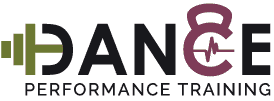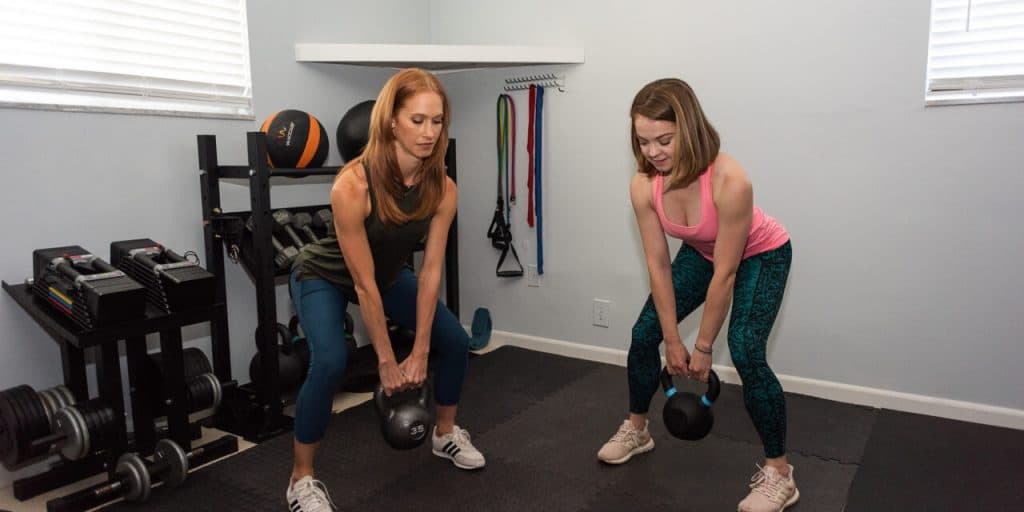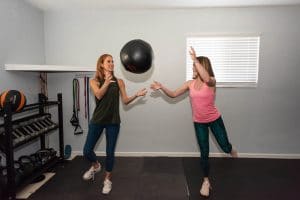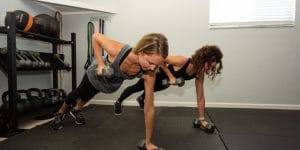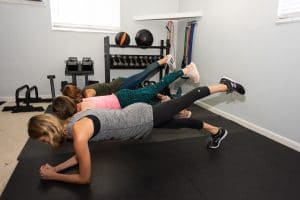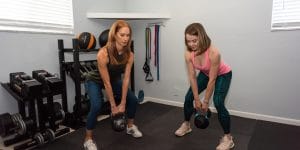Common Mistakes in Cross Training for Artistic Athletes
So we’ve taught you how to start implementing a program in a prior post, but now let’s be sure you avoid these common mistakes!
To read that post if you missed it, click here.
Here’s a list of what we see most often, but for more details or questions, contact us any time!
- Being Too Complicated or Complex
- You don’t need crazy equipment or movements to see results. Actually you will likely benefit much more by keeping it simple. That doesn’t mean keep it easy though.
- Find the movements that work for you, that you feel correctly, that you struggle with, and build those until you own them!
- Then it’s time to find some progressions to continue to challenge yourself
- Staying in your End Ranges
- Most Artistic Athletes spend a ton of time working flexibility and in stretched positions. This is your end range of motion, meaning near the limits of your mobility.
- The problem is, when you never work in mid ranges (think more neutral, parallel work), you will never be able to increase neuromuscular control or strength to your full potential. Our body is most comfortable and capable in mid ranges.
- By building your mid range, you improve the mind body connection and will see drastic improvements in your end range control.
- Plus you increase risk of injury when doing too much end range work. We shoot for about 60-75% of our cross training in or near mid ranges!
- Strengthen the mid range to improve the end range!
- Going Totally Solo
- This is a weird piece of advice for a guide to do it yourself right? If you’re having trouble understanding or making sense of all this information though, it’s time for some help.
- Maybe you meet with a trainer for a single session to review form, shoot some messages to those of social media like us, or find some way to add a bit of knowledge to assist yourself. This could be books, webinars, or trying out new programs .
- We’ve got a special offer for you that may help if you need to try something easy to wrap your head around all of this.
We’re offering our Glute Tune-Up program, for under $20 right now!
It’s got awesome and quick workouts you can do as warm-ups or on their own, all full body, but making sure we finally get your glutes engaging properly!
Check it out here and see what these 15 min workouts can do for you! Sign Up Here
- Sticking to the Same Movements too Long
- If you are not feeling the exercise where you want or just not enjoying it, I don’t care who says it’s the best. It’s not the best for you. Move on to a new exercise that you enjoy and feel better!
- Sometimes this may just be sending a form video to a coach like us to help you modify the movement or it may be searching for entirely new movements!
- Not Pushing or Challenging Yourself
- Artistic Athletes have some of the highest will power and pain tolerances we’ve ever worked with. Yet, when cross training, you very commonly hold back.
- For your body to adapt (think get better to meet new standards and demands), it has to be challenged. Be sure you are making each movement adequately hard.
- A good guide is saying you could literally not complete another 3-4 repetitions of the movement because your muscles are tired.
- By the end of the workout you should be tired and have a bit of muscle soreness. This doesn’t mean it’s so tough you can go to rehearsal, just enough that you know you did something.
- We do not recommend you go to absolute failure/exhaustion every time, but for strength moves, you should get close to this level a few times a week/month.
- Replicating Dance Movements
- This is one of our biggest pet peeves! Doing dance moves isn’t cross training, no matter how many weights, cables, bands, and wobble boards you add.
- Really, your likely just making you technique worse. When you arabesque with weights on your shoulders you shift your center of gravity, making your muscles work different than they typically should. Add a wobble board at it gets even worse. Your body starts to learn these positions and can lead to shifting your weight inappropriately during dance.
- Plus, it’s just not beneficial.
- Break the movements down to their component parts, then you can focus to work the glutes, shoulders, etc. in better positions with more focus!
- You will build your technique from the ground up, strategically, rather than trying to do it a 1,000 different ways.
- Only Doing Tiny Movements for Control of Smaller/Intrinsic Muscles
- Yes we love keeping your toe strength and pelvic tilts in the mix, but you should also do some big movements as well. Think lunges, step ups, pull-ups, and med ball slams!
- There’s a few main reasons for this. The two biggest we will cover here are developing coordination and allowing greater progression.
- When you work the body only in isolation (think foot work with theraband), you never make those muscles work in conjuction with the rest of the body. So this has very little carry over into your dance.
- Also it’s very hard to continue to challenge your body in small positions. It’s easy to plateau and find yourself doing the same color band, the same exercises, the same number of times. There is no benefit to this.
- By taking that control and combing it with challenging moves that engage your whole body, you can continue to progress for years to come!
- Too Much Variety in your Plan
- Especially when you are starting out, you should slowly update your exercises and only a few at a time.
- By changing all the movements entirely, weekly or even more often, you don’t give your body anything to adapt to, Just like you would not rehearse a new piece a single time, you should not train a movement a single time.
- To keep it exciting, you can change tidbits, like longer hold, moving quicker/slower, etc. but keeping to much change doesn’t confuse your muscles or any other made up strategy. It actually just decrease the benefits of training. You need some time to get comfortable and be able to push harder in the movement.
- You want to develop some proficiency in the movements, progress them a bit, then move to a new challenge.
- If you do get bored easy, try to pick a few full body movements to focus on, then add what’s called supplemental work to keep varied. This could be balance moves, core work, and other smaller control type exercises.
Hopefully you found all these tips helpful. Reach out anytime for more details!
If you’re ready to try a program but not yet ready for a 12 week or longer, try out our Glute Tune-Up program!
